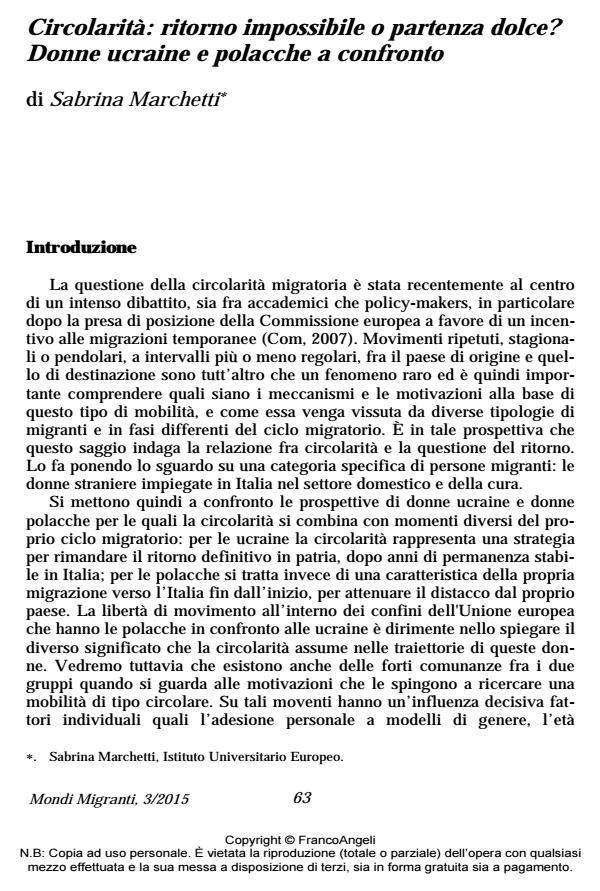Circularity: impossibility of returning or softening the departure? A comparison between Ukrainian and Polish women
Journal title MONDI MIGRANTI
Author/s Sabrina Marchetti
Publishing Year 2016 Issue 2015/3
Language Italian Pages 19 P. 63-81 File size 76 KB
DOI 10.3280/MM2015-003004
DOI is like a bar code for intellectual property: to have more infomation
click here
Below, you can see the article first page
If you want to buy this article in PDF format, you can do it, following the instructions to buy download credits

FrancoAngeli is member of Publishers International Linking Association, Inc (PILA), a not-for-profit association which run the CrossRef service enabling links to and from online scholarly content.
This article investigates the relationship between circular migration and return migration by taking the case of Ukrainian and Polish women employed in the Italian domestic work sector. The comparison between these two groups highlights how circularity can differently combine with various stages of migratory cycles: for Ukrainians circularity is a strategy to postpone their final return to their home country, after several year of stable settlement in Italy; whilst for Poles, circularity has characterised their migration towards Italy since the beginning, alleviating their departure from Poland. This difference is mainly explained by Poles’ freedom of mobility within the EU, in comparison to Ukrainians. However, this article also shows communalities between the two groups which have to do with the motivations pushing these women to engage in circularity.
Keywords: Circular migration, Domestic work, Ukraine, Poland, Italy, Migration cycle
Sabrina Marchetti, Circolarità: ritorno impossibile o partenza dolce? Donne ucraine e polacche a confronto in "MONDI MIGRANTI" 3/2015, pp 63-81, DOI: 10.3280/MM2015-003004